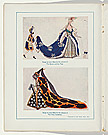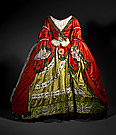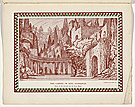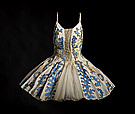Léon BAKST

Léon Bakst (b Grodno, Russia/Lithuania border (now Belarus) 10 May 1866 – d Rueil-Malmaison, France 27 December 1924) attended the Academy of Fine Arts in St Petersburg from 1883 until he was expelled in 1887. Art school exposed him to the influence of the Russian Realist group, the Wanderers.
Bakst started his career as a book illustrator and painter, achieving only moderate success as a portraitist. In 1890 he met Alexandre Benois and joined the Nevsky Pickwickians, through whom he also met Diaghilev.
From 1893–97 he lived in Paris on and off, studying at the Académie Julian under the Academist painter, Jean-Léon Gérome, whose interest in Orientalism and Greek mythology were relayed to Bakst. He visited Spain, Germany, Tunisia, Algeria and Greece, settling permanently in Paris in 1912 after being exiled from Russia.
From 1898–1904, Bakst was Diaghilev’s art assistant for Mir Iskusstva. In 1901 he designed his first theatre work for Diaghilev—Léo Delibes’s ballet, Sylvia. Although this production was never realised, from that time Bakst concentrated on designing both sets and costumes for various theatres in St Petersburg.
In 1909, Bakst was invited to design productions for the first Saison Russe in Paris. He continued working with the Ballets Russes, becoming the artistic director in 1911, until 1919. Bakst designed more of Diaghilev’s Ballets Russes productions than any other artist associated with the company, while also working as a freelance dress and costume designer for select clients. Bakst designed for several productions in London and Paris and returned to the Ballets Russes to design The sleeping princess in 1921.
EO Hoppé
Léon Bakst 1916 Collection of Curatorial Assistance, Pasadena, California











